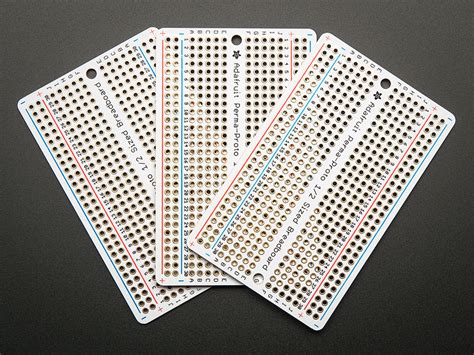Understanding PCB (Printed Circuit Board)
What is a PCB?
A PCB, short for Printed Circuit Board, is a flat board made of insulating material, such as fiberglass or plastic, with conductive copper traces printed on its surface. These traces connect various Electronic Components, such as resistors, capacitors, and integrated circuits (ICs), to form a complete electronic circuit.
How are PCBs manufactured?
The manufacturing process of PCBs involves several steps:
1. Designing the PCB layout using specialized software
2. Printing the circuit pattern onto a copper-clad board using photoresist and etching techniques
3. Drilling holes for component placement
4. Applying a Solder Mask and silkscreen for insulation and labeling
5. Populating the board with electronic components
6. Testing and Quality Control
Advantages of using PCBs
- Compact and space-efficient design
- Reliable and durable connections
- Consistent performance and reduced signal interference
- Suitable for mass production and commercial applications
- Easier to troubleshoot and repair
Understanding Breadboard
What is a breadboard?
A breadboard is a rectangular plastic board with a grid of holes used for temporary prototyping of electronic circuits. It allows you to quickly connect components and wires without the need for soldering. Breadboards are commonly used in educational settings, hobbyist projects, and initial circuit design.
How does a breadboard work?
A typical breadboard consists of several parts:
– Terminal strips: Long, conductive metal strips that run horizontally across the breadboard, providing power and ground connections.
– Socket strips: Vertical rows of interconnected sockets that allow you to insert component leads and wires.
– DIP support: A central gap that accommodates dual in-line package (DIP) ICs.
Components and wires can be easily inserted into the breadboard’s holes, and the internal connections of the socket strips allow for quick circuit assembly and modification.
Advantages of using breadboards
- Quick and easy prototyping without soldering
- Reusable and reconfigurable
- Ideal for testing and experimenting with circuit designs
- Suitable for educational purposes and learning electronics
PCB vs Breadboard: Key Differences
| Aspect | PCB | Breadboard |
|---|---|---|
| Design | Permanent, custom-designed copper traces | Temporary, standardized grid layout |
| Connectivity | Soldered connections | Plug-and-play connections |
| Durability | Robust and long-lasting | Prone to wear and tear with repeated use |
| Size and Compactness | Compact and space-efficient | Larger and less space-efficient |
| Signal Integrity | Reduced interference and consistent performance | Prone to signal interference and crosstalk |
| Production | Suitable for mass production and commercial use | Primarily used for prototyping and testing |
| Ease of Modification | Requires redesign and fabrication for changes | Easily modifiable and reconfigurable |
| Cost | Higher initial cost, but cost-effective for larger quantities | Low cost for small-scale prototyping |

When to Use PCB or Breadboard
Scenarios for using PCB
- Final product development and manufacturing
- High-volume production
- Devices requiring compact and reliable circuits
- Applications demanding consistent performance and reduced interference
- Circuits with complex layouts and multiple layers
Scenarios for using breadboard
- Initial circuit design and prototyping
- Testing and experimenting with different components and configurations
- Educational purposes and learning electronics
- Low-volume projects and hobbyist applications
- Temporary demonstrations and proof-of-concept circuits
Frequently Asked Questions (FAQ)
1. Can I directly transfer a breadboard circuit to a PCB?
While the overall circuit design can be transferred from a breadboard to a PCB, the physical layout and connections will need to be adapted to suit the PCB’s design rules and manufacturing processes. It’s important to create a proper PCB layout using specialized software before fabrication.
2. Are there any limitations to the complexity of circuits that can be built on a breadboard?
Yes, breadboards are suitable for relatively simple circuits with a limited number of components. As the complexity and component count increase, issues like signal integrity, crosstalk, and physical space constraints can arise. Complex circuits are better suited for PCB implementation.
3. Can I reuse a PCB like I can with a breadboard?
Unlike breadboards, PCBs are designed for permanent use and are not meant to be reusable in the same way. However, some PCBs may include modular connectors or sockets that allow for certain components to be swapped or replaced if needed.
4. Are there any alternatives to breadboards for prototyping?
Yes, there are several alternatives to traditional breadboards, such as:
– Perfboards: Pre-drilled boards that allow for soldered connections
– Stripboards: Boards with pre-etched copper strips for soldering components
– Prototyping PCBs: Custom-designed PCBs specifically for prototyping purposes
– Simulation software: Virtual tools that allow for circuit design and simulation without physical components
5. Can I mix and match PCBs and breadboards in the same project?
Yes, it’s possible to use both PCBs and breadboards in the same project. For example, you might use a breadboard for initial prototyping and testing, and then transfer the finalized circuit to a PCB for a more permanent and reliable solution. However, it’s important to consider the compatibility and interfacing requirements between the two.
Conclusion
In summary, PCBs and breadboards serve different purposes in the world of electronic circuit design and development. PCBs offer a permanent, reliable, and compact solution for final product manufacturing and commercial applications. On the other hand, breadboards provide a quick and flexible way to prototype, test, and experiment with circuit ideas.
Understanding the differences between PCB and breadboard, along with their respective advantages and use cases, is crucial for anyone involved in electronics projects. By choosing the right tool for the job, whether it’s a PCB for a finalized design or a breadboard for initial experimentation, you can streamline your workflow, save time and resources, and ultimately create successful electronic devices.
As you continue to explore the fascinating world of electronics, keep in mind the unique characteristics and benefits of both PCBs and breadboards. With this knowledge, you’ll be well-equipped to tackle a wide range of projects and bring your electronic ideas to life.




